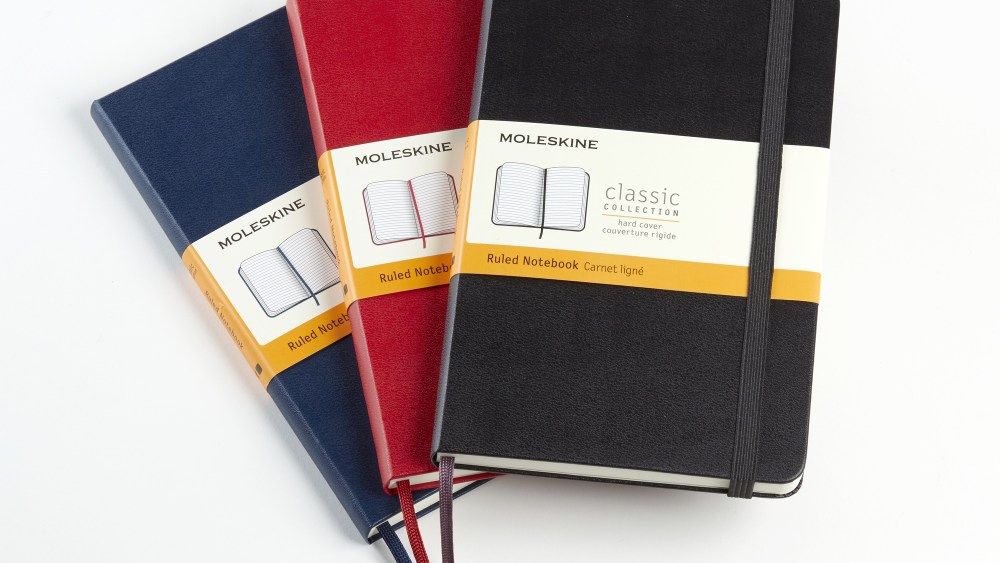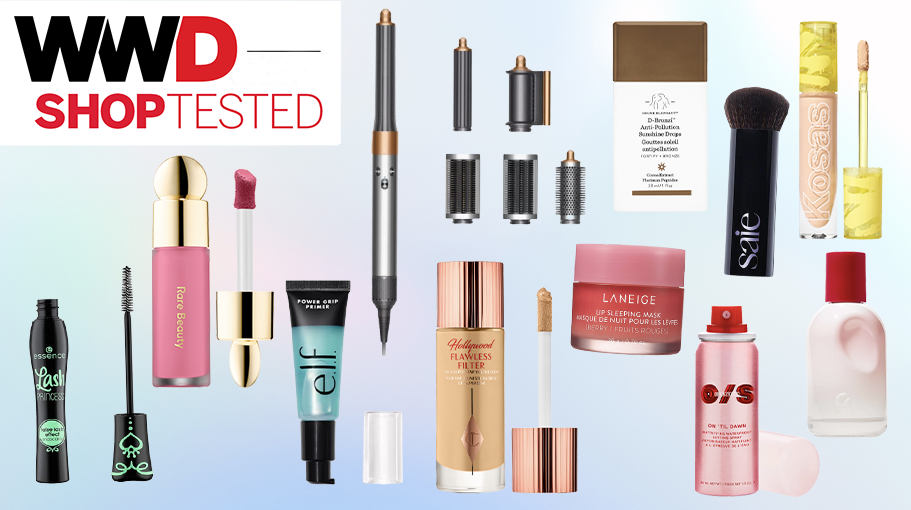Moleskine is staying the course despite a change in the C-suite.
Last month, the Milan-based Moleskine Srl elevated Christophe Archaimbault to global chief executive officer of the company, succeeding Daniela Riccardi, who retired. Ward Simmons, who had previously served as senior vice president of marketing, was named president of the Americas.
In an interview at the company’s New York City headquarters, they stressed that the plan is to essentially follow the strategy laid out in 2020 by Riccardi and Archaimbault, who had just joined Moleskine from Diesel — with a few tweaks.
“The market today is different,” Archaimbault said, “so this is the start of a second chapter of a story that was written five years ago.”
You May Also Like
Since half of all purchases of the company’s journals and related products are bought as gifts, Moleskine will be leaning more into that part of the business, he said. In addition, the company will focus more on brand building and touting its rich heritage rather than just promoting its products.
“Our focus on premium products hasn’t changed,” he said, “just the way we deliver them.”
Archaimbault said even though Moleskine is based in Milan, the company looks at each market as unique and it operates 10 offices around the world to ensure that the sales, marketing and financing are distinct to each region.

Today, North America represents 40 percent of Moleskine’s global sales, which he declined to provide as a private company. Europe represents another 40 percent and Asia the remainder. The five markets where the company sees the most growth are the U.S., Japan, China, France and the U.K. “That’s where we’re focusing our investment.”
But other regions are also getting some attention, they said, including Canada. Although that country represents less than 5 percent of the total North American business, the plan is to add freestanding stores and open an e-commerce operation. “There are a lot of opportunities in Canada,” Simmons said. “It’s an untapped market.”
Mexico and Latin America also represent growth vehicles, they believe. Right now, Moleskine is carried in department stores and independent retailers in those regions, but the goal is to open e-commerce and grow the direct business there as well with Rio de Janeiro and Mexico City on their radar as possible store locations.
Globally, Moleskine is sold in some 29,000 doors around the world, including 60 of its own stores. Archaimbault said none of the company’s competitors operate their own stores, so having a retail footprint is seen as a point of differentiation. The plan, he said, is to grow the number of Moleskine stores to 150 over the next five years.

In the U.S., there are 11 stores, Simmons said, five in New York City alone, and the plan is to more than double the number in America to 30. A unit at the Boston Seaport is slated to open in November.
Archaimbault said Moleskine is sold in several “subchannels,” his word of choice for its wholesale locations. That includes stationery stores, travel retailers, university shops, museums and bookstores such as Barnes & Noble and The Strand. “That’s the right audience for Moleskine,” he said.
The brand is also carried in Bloomingdale’s and is launching in Nordstrom this spring. Its core product is also sold at Target and on Amazon as a way to service students for their back-to-school needs.
At the Milan headquarters, Simmons said, Moleskine has a Gen Z board from around the world that was founded three years ago to provide insight on young people and how to best address them.
Archaimbault said students aside, the target customer is between 30 and 40, affluent, urban and creative, with a strong interest in art. Seventy percent are professionals and 60 percent are women. For the younger people, Moleskine offers special discounts and internships to students to attract them to the brand and hopefully keep them for life.
Whether for students or older people, Moleskine’s top seller continues to be its large notebooks — plain, dotted or ruled — with a black cover.
Moleskine traces its roots to France in the 19th century when artists and authors such as Van Gogh, Picasso and Hemingway bought pocket-sized notebooks, or “carnets” with leather or oilskin covers, from local stationery stores to jot down thoughts and sketches. The name Moleskine is attributed to the British writer Bruce Chatwin, who described the Parisian notebooks as “carnets moleskines,” a reference to their black oilskin covers. Although they had essentially disappeared from the scene, in 1997 Maria Sebregondi brought the notebooks back to life and created the Moleskine brand.
Today, Moleskine is owned by D’leteren Group, a family-owned Belgian investment firm that acquired the company in 2016 and took it private.
Although the digital age has dramatically impacted the craft of writing, Archaimbault said business is actually up over last year and he views the digital era as an opportunity rather than a threat. Writing, he believes, is the best way to digest information, can reduce anxiety and serve as an antidote to today’s overflow of information. “Writing can improve your communication skills,” he said, pointing to Sweden and other countries which are returning to using pen and paper.
Sweden’s National Agency for Education reported that students using textbooks, paper, pens and pencils in school showed better comprehension than those using digital texts and their schools reverted this year to their former learning method.

Even so, Moleskine hasn’t completely disavowed the digital world and in 2022 created Moleskine Smart, which blends the two. A Smart pen is connected via Bluetooth to a Moleskine Notes app and links to a Smart Notebook, which enables words and drawings to be transformed into digital documents.
Archaimbault said an updated app will be launching in July that will include AI features as well. And while he acknowledges that writing will never replace digital information, “we need to find the right balance.”
Beyond notebooks, Moleskine offers other products that are related to writing such as pens and pencils, bags and even eyewear, all of which are “directly connected to notebooks,” he said. Twenty percent of the business is ancillary products and bags are half of that, Archaimbault said.
“In our five-year plan, growth will come from that category,” he said. The company offers backpacks and device bags in three collections: Classic; Legendary, which is made from recycled materials, and Precious & Ethical, its most elevated offering made from premium materials. “We look at bags as a driver of growth. We’ll be expanding our Legendary collection starting this summer.”
Moleskine also sells Redo backpacks as part of its sustainability efforts. These are upcycled bags made in Northern Italy by disadvantaged workers, Simmons said, adding that the brand sells about 200 in the U.S. and 1,000 worldwide annually.
In addition, the company operates a café at the airport in Geneva selling food and notebooks, and will be opening others in Paris and Hong Kong. There are also plans to partner with cafes for a similar experience in the U.S. and Canada.
“It’s a way to keep customers in there longer,” Simmons said. “It drives sales and is an experience.”

With its core notebooks and planners, Moleskine creates limited-edition collections such as a Harry Potter-themed or the Year of the Snake or Sakura collections. There are also I Love NY books and notebooks for the White House Historical Association.
Strategic partnerships are a key part of the business, Simmons said. Moleskine works with artists to create special notebooks tied to various events and special occasions such as Mother’s Day and has also teamed with cultural moments such as the “Wicked” movie, “The Outsiders” on Broadway and the 50th anniversary of “Saturday Night Live.” “Anything that has to do with pen and paper,” Simmons said.
A “Peanuts” 75th anniversary collection is coming in May, and this August, Moleskine will issue a NASA-themed capsule.



